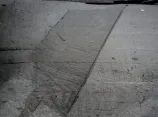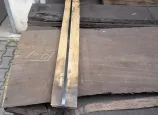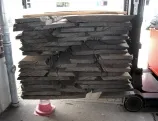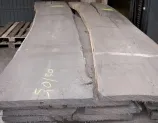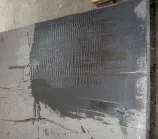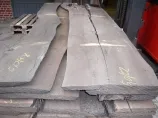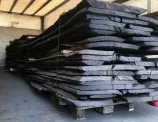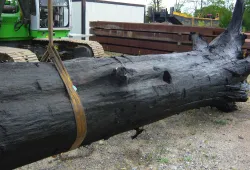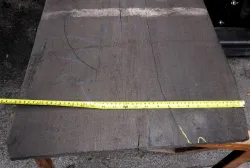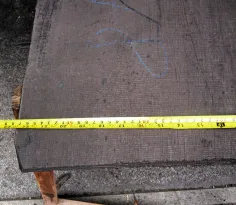Shipping country
Wood Species
Bog oak in stock!
Bog oak in itself is not rare at all, almost every day in Northern Europe during earthworks, excavations, river deepenings, dredging in gravel and sand pits, logs are found stuck in the ground, usually even a real nuisance for the workers. A log that is stuck in the ground, often weighing several tons, is not so easy to remove, and usually a crane has to be brought in to help.
When this nuisance is finally removed, the log is salvaged and the work can continue, the next question is: where to put the debris? Even if the log is still reasonably intact and not completely decomposed and cracked, a rapidly progressing process of decay and cracking now begins, which can lead to the complete destruction of the wood in a short time, especially in warm weather.
It is possible to wrap the logs in plastic sheeting, but this almost always starts a rotting process with fungal growth and mold; it is possible to sprinkle the wood permanently with a sprinkler and thus preserve the condition for a time, but immediate cutting of the log into planks and boards at the sawmill has been found to be a safe method of making this valuable material usable. However, bog oak logs are not at all popular with sawmills, in most cases there is sand or small stones in the wood, which quite reliably ruin any expensive saw blade...
Now, for the first time, the color of bog oak can be judged: the most sought-after is, of course, a deep black color, which, however, only comes about under the fortunate interaction of various factors such as wood ingredients, iron ions, oxygen exclusion and bog water. Very often bog oak logs are colored only light yellow-gray, brown to gray, which, of course, are much lower rated colors. After cutting in the sawmill, the logs are then stored for years in different rooms with varying degrees of humidity until, after several years, multiple restacking, relocation to other rooms and a great deal of patience, they are eventually dried to the point where they can be exposed to normal climatic conditions. Under these normal conditions, the wood then dries down to a relative humidity of about 10%, so that the bog oak can then be further processed like normal wood.
Drying naturally creates great stresses in the wood which can result in extreme warping, cracking and warping, you can find some photos of such crooked pieces in the photo gallery. So drying must simply be done very slowly and gently with constant monitoring of wood moisture content. Despite careful drying, more or less severe cracks can always be found in bog oak wood, also rotten spots or spots discolored by fungi have to be cut out of the wood, so in the end only about 30-50% of the salvaged wood can be processed. The larger and longer the dimensions of the desired cuttings become, the more the scrap increases, and recurring cracks can increase the amount of scrap to be sorted out to 80-90%. We use this wood for a variety of applications, and even the scraps, offcuts and minimally defective pieces that occur when cutting fixed dimensions are combined in assortments and sold, this thousands of years old prefossil material is simply worth treating it with special respect!






